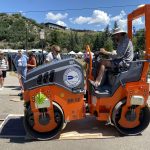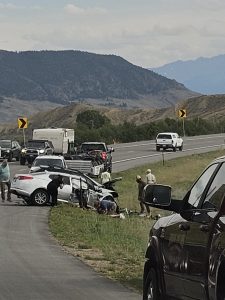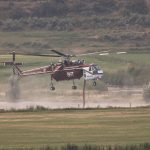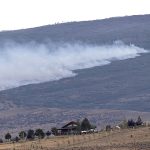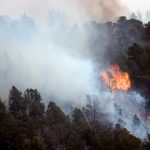Gardening with Deb Babcock: Planning a wildflower garden
Steamboat Springs — Of area hiking trails, the one on Rabbit Ears Pass in July is the most colorful and diverse I’ve found in terms of the wildflowers that proliferate there. In a single field, you’ll find spires of bright red Indian Paintbrush surrounded by the blues of lupine, yellows of sunflowers, white yarrow and delicate pink-veined Richardson’s geranium.
The beautiful white and blue Colorado columbine, our state flower, is found in profusion along this trail as well as tall spikes of larkspur and meadows of bright pink fireweed. It’s so breathtaking, I sometimes forget to look up and gaze at the mountain vista.
Re-creating a wildflower palette in your yard isn’t as simple as strewing a packet of wildflower seeds on top of your soil, as most gardeners who’ve tried this will tell you. But the rewards of a wildflower patch are worth the work involved to create this informal, natural landscape. Here’s how to do it successfully:
First, choose a seed mix or seedlings that are suitable for your site. Some wildflowers require hot, dry, southern exposures while others only can grow well in cooler, shaded or moist areas. Many wildflower mixes contain grass seeds, which will help fill in spaces around the flowers. The green is a nice backdrop and provides support and protection to the wildflowers. A mix of self-seeding annuals, biennials and perennials seems to work best.
The wildflower patch will change throughout the season and the years as different flowers come into bloom. And, because some wildflowers can be aggressive, your wildflower planting may change from year to year in terms of diversity of flowers.
Many seed companies have developed wildflower seed mixes that contain suitable blends of flowers for our alpine environment. Some vendors, such as Western Native Seed (http://www.westernnativeseed.com), will blend a seed mixture specifically for your interests.
Be wary, however, as some seed providers inadvertently include noxious weeds in the mixes. To ensure that your wildflower mix is safe for use in Colorado, contact the Routt County CSU Extension for a list of local noxious weeds.
Prepare your wildflower patch by lightly breaking up the soil with a rake and eliminating weeds. If your soil is compacted or consists of heavy clay, you may need to amend it with organic matter.
Fall is the best time to sow your wildflower seed because winter snow will promote seed germination in the spring. But if you want to do it in the summer, be sure to water the area if there is not enough rainfall.
Generally 4 to 8 ounces of seed per 1,000 square feet is sufficient. Too much seed might cause perennials to be shaded out by too-dense annuals.
Lightly rake the area or pull a section of chain-link fence behind a tractor to lightly cover the seed with soil. If they receive adequate moisture, most seeds will begin germination in 10 to 15 days, though some take a month or more to sprout.
Deb Babcock is a Master Gardener through the CSU Extension Routt County. Products and companies mentioned in this article are not endorsed by the Master Gardener program but provided for information purposes. Call 970-879-0825 or email csumgprogram@co.routt.co.us for more information.

Support Local Journalism

Support Local Journalism
Readers around Steamboat and Routt County make the Steamboat Pilot & Today’s work possible. Your financial contribution supports our efforts to deliver quality, locally relevant journalism.
Now more than ever, your support is critical to help us keep our community informed about the evolving coronavirus pandemic and the impact it is having locally. Every contribution, however large or small, will make a difference.
Each donation will be used exclusively for the development and creation of increased news coverage.


